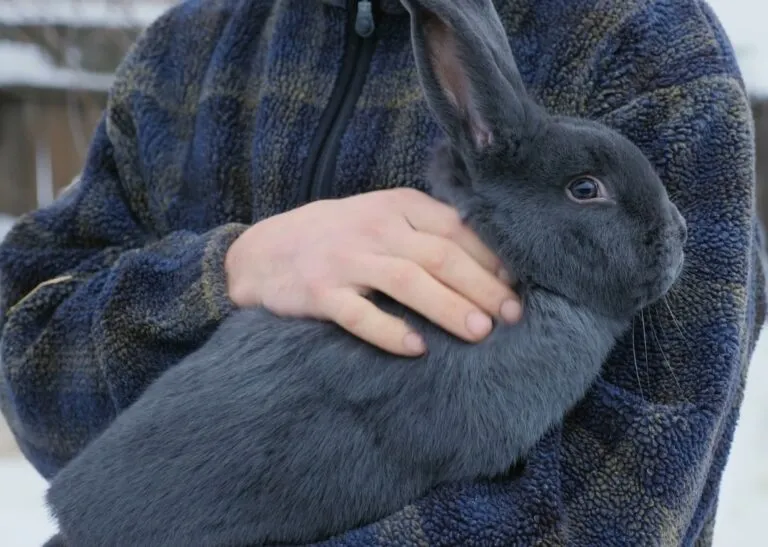Housing and Grooming
Important for housing: Company and variety
Although the Vienna Blue is a robust and undemanding rabbit breed, there are a few points to take into account when owning one so that it feels at ease.
Like all rabbits, these slate blue beauties are very sociable creatures and should definitely not have to live alone. They need at least one other rabbit with which they can communicate and cuddle in rabbit fashion.
Living together with littermates of a different sex works best. Equally, a group with one male and two females is possible.
With certain conditions, you can keep your Vienna Blue together with cats. Don’t get your hopes up though of a close friendship developing. Dogs and rabbits may also go together. To be on the safe side, never leave your rabbit alone with the dog.
Not together with guinea pigs
Unfortunately rabbits are often kept together with guinea pigs, although the two species have very little in common and shouldn’t be housed together.
Rabbits like cuddling and help keep each other clean. Guinea pigs aren’t familiar with such behavior and feel cornered by it. Another example is that whilst guinea pigs have a very complex spoken language, rabbits only scream in fear of death. Misunderstandings and aggressions are predestined.
Vienna Blues are very fertile
Caution: Vienna Blues are very fertile. For this reason, these slate blue rabbits are very popular with breeders in particular. In order to avoid unwanted offspring and aggressive behavior relating to the heat period and false pregnancy, you should get your rabbits castrated or neutered in good time.
Best kept outside
Although Vienna Blues can also be kept inside a home, an outdoor hutch with an attached outdoor enclosure is a more species-appropriate alternative, because these robust rabbits feel happiest there.
Definitely make sure there is sufficient protection from the sun in summer, because too much sun can bleach the fur of Vienna Blues. In general, you should make sure that your rabbits don’t get too hot in summer.
This is the basic equipment of a rabbit hutch:
In the zooplus online store, you can also find a large selection of rabbit hutches and outdoor enclosures.
Rabbits need space
A small shed on the balcony is not a suitable space for a rabbit. This also applies to curious Vienna Blues with their strong urge for exercise. Due to their size alone, they need a spacious living area.
Like all lagomorphs, Vienna Blues get bored quickly. Hence, they need regular activity and enjoy varied exercise. There should be plenty of space to hop, run and swerve. An adventure play area with sandpits for digging, as well as pipes and tunnels to hide, gets any rabbit’s pulse racing.
You can also find play tunnels and pipes in the zooplus online store.
Low-maintenance rabbits
Naturally the hutch and enclosure should be cleaned regularly. Apart from this, taking care of Vienna Blues isn’t particularly laborious.
You should brush out the coat now and then during the moulting period in spring and autumn.
Also regularly check your rabbit’s claws. Especially if animals solely move within your home, their claws don’t get worn down enough. You should cut overly long claws with clippers, although your vet can do this too.
